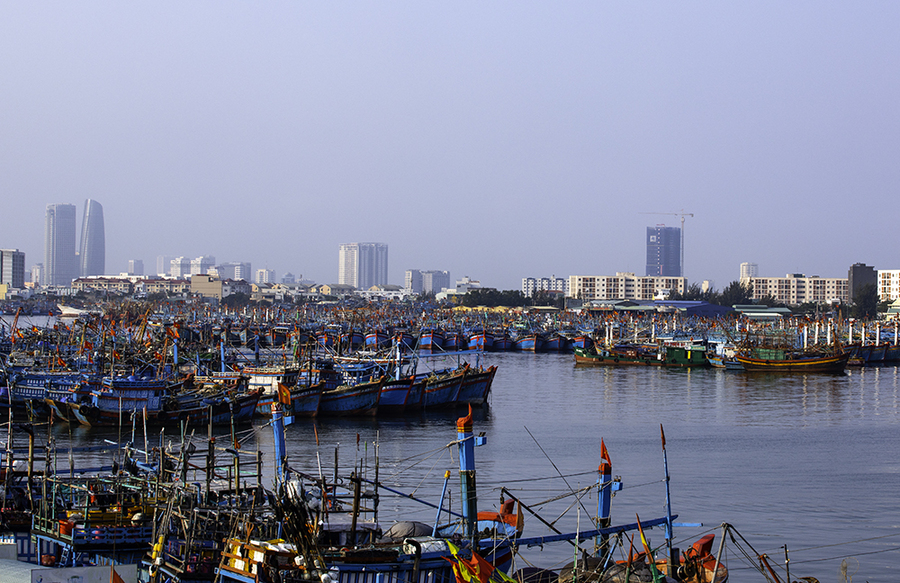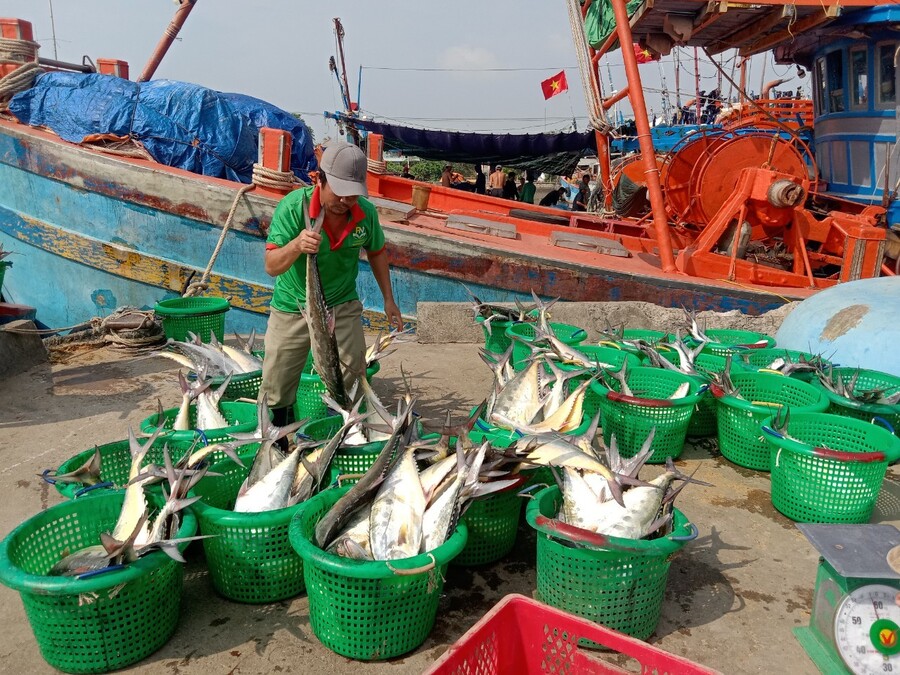Treating wastewater at fishing ports is an urgent requirement to protect the marine environment, preserve coastal ecosystems, and ensure the sustainable development of the fisheries sector. Fishing ports increasingly face severe pollution due to the large volumes of wastewater generated from seafood processing, preservation, and unloading activities. Designing and constructing an effective wastewater treatment system is a key solution that not only minimizes environmental impacts but also enhances long-term sustainability for the industry.
1. Environmental and Ecosystem Impacts of Fishing Port Wastewater
If not properly treated, wastewater from fishing ports can become a highly hazardous source of pollution. This wastewater typically contains high levels of organic matter, grease, pathogenic microorganisms, chemical preservatives, and suspended solids, such as:
-
Pollution of surface and groundwater sources: The decomposition of organic matter reduces dissolved oxygen levels, leading to fish kills, algal blooms, and ecosystem imbalances.
-
Impact on local livelihoods: Communities near fishing ports often face foul odors and contaminated water sources that are unsuitable for domestic use or aquaculture.
-
Spread of disease: The wastewater may contain dangerous bacteria and pathogens that cause diseases like dysentery, diarrhea, and parasitic infections.
Untreated wastewater can cause severe pollution in the fishing port area
2. Characteristics of Fishing Port Wastewater
Fishing port wastewater is uniquely complex, generated primarily from activities like cargo unloading, seafood processing and preservation, and cleaning of boats and equipment. Unlike other industrial wastewater, it contains:
-
High biodegradable organic load (BOD, COD): Includes fish meat, blood, viscera, and decomposing aquatic fluids — all of which create odor and foster harmful bacteria.
-
Animal fats and oils: Fish oil and grease are difficult to decompose and can create a surface film that blocks oxygen transfer, harming aquatic life.
-
Suspended solids (TSS): Includes fish scales, bones, shrimp shells, soil, household waste, and processing debris like plastic bags and foam boxes.
-
High microbial load: Anaerobic conditions and excess organic matter foster the growth of harmful microorganisms.
Fishing port wastewater contains high concentrations of organic matter and potentially harmful bacteria
3. Key Technologies for Fishing Port Wastewater Treatment
3.1. Coarse Screen Installation
A crucial first step is installing a coarse screen to remove large solid waste like shrimp shells, fish bones, plastic bags, and wood debris. This prevents blockages and protects downstream mechanical components.
3.2. Equalization Tank
This tank balances flow and pollutant concentration fluctuations, especially during peak seafood processing hours. It ensures the treatment system operates efficiently and consistently.
3.3. Dissolved Air Flotation (DAF) Tank
Next is the DAF flotation tank — a highly efficient technology for separating grease and suspended solids, especially suitable for seafood wastewater characteristics. In the DAF tank, the wastewater is mixed with compressed air under high pressure. When depressurized in the tank, microbubbles form and attach to particles of fat, oil, and suspended solids, causing them to float to the surface. This layer of foam containing impurities is then automatically skimmed into the sludge collection system.
3.4. UASB Tank
An anaerobic treatment tank where microorganisms break down organic matter. UASB (Upflow Anaerobic Sludge Blanket) technology is energy-efficient and ideal for high-organic-load wastewater.
3.5. MBBR Tank with Air Blowers
This aerobic treatment tank uses plastic carriers to house beneficial microorganisms. Continuous air supply enhances oxygen levels, promoting the breakdown of residual organics.
3.6. Activated Sludge and Disinfection
Post-biological treatment, wastewater passes through a secondary settling tank to separate remaining sludge. It then enters a disinfection tank where chlorine or UV light eliminates harmful pathogens before discharge.
3.7. Sludge Treatment
At this stage, the sludge is compressed using sludge dewatering machines—typically frame filter presses or belt presses—to remove the majority of the water content, thereby reducing its volume and transport weight. After dewatering, the sludge can be treated through various methods such as sanitary landfill, composting, or thermal treatment, depending on its characteristics and level of contamination.

Fishing port wastewater treatment requires a multi-technology approach
Implementing an effective wastewater treatment system at fishing ports is essential for sustainable fisheries. It safeguards the environment, preserves aquatic resources, and supports compliance with modern production and export standards. If you're looking for a trusted contractor to design and install a wastewater treatment system, contact Đại Nam today for expert consultation and tailored solutions.


